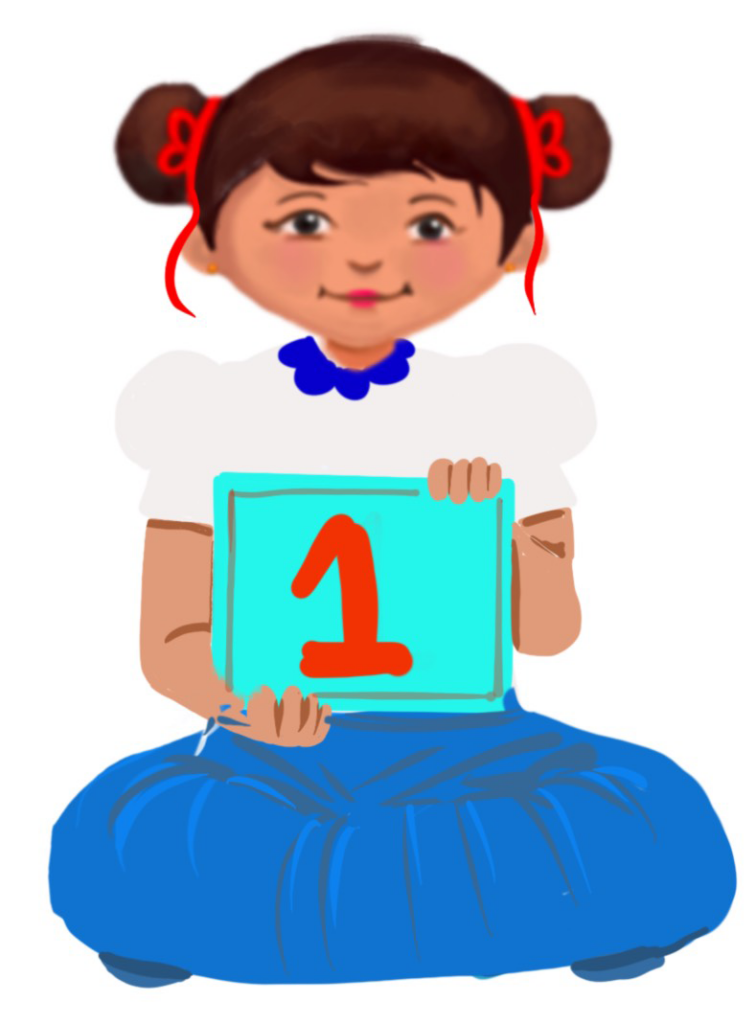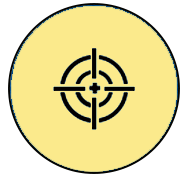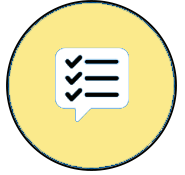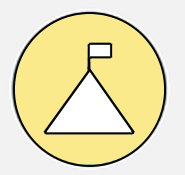
Computer and Uses of Computers
Class 1
 Objective
Objective
Students will be able to list the uses of computers and the places where computers are used.
 Prerequisites
Prerequisites
| 1. Students should have some basic knowledge about a machine and a computer. 2. Children should be able to read the sight words; the teacher should introduce the words before the actual lesson. |
 Goal
Goal
All
All children will be able to know that computers are used in various places.
Some
Some children can list the uses of the computers as taught in the class.
Few
A few children will be able to list all the uses of computers apart from those taught in the class.
Operational Definition
All – This gives the goal, which is the minimum that the teacher must achieve for all students in the classroom.
Some – This gives the goal that the teacher may try to achieve for some students in the classroom who can achieve the suggested goal over and above the goal stated for ‘All’.
Few – This gives the goal that the teacher may try to achieve for few students in the classroom who can achieve the suggested goal over and above the goal stated for ‘Some’ and ‘All’.
Materials Required:
Technology
- An audio-enabled computer with an internet connection, smartboard projector, and screen.
- All devices like laptops, tablets and desktop computers with accessibility features enabled.
- Screen readers like JAWS and NVDA.
- Large keyboards, built-in screen magnifiers, hearing aids, text-to-speech and speech-to-text software.
- Voice recognition software like Siri, Windows Speech Recognition, etc.
- Headsets
- Student writing or typing tools.
Teacher Materials
- Whiteboard and markers or blackboard and chalk.
- Pre-teach vocabulary cards, sight words, communication cards and worksheets.
- Lesson videos.
Student Handouts
- Handout 1: Communication Cards
- Handout 2: Vocabulary Cards
- Handout 4: Trace and Learn Card
- Handout 5: Yes or No Cards
- Handout 6: Thumbs Up and Down Card
- Handout 7: Worksheets
Print Preparation
The teacher will print, copy or laminate (wherever applicable):
- Communication Cards for students
- Trace and Learn Cards for students
- Vocabulary Cards for students
- Thumbs up and Thumbs down Card for students
- Yes or No Cards for students
- Pre-teach vocabulary cards, sight words cards
- Worksheets for students
Preparation for the Activity
- All the learning and teaching materials needed for this lesson plan must be ready before the lesson begins.
- Ensure that there are enough copies for all children. Multiple copies can be made by photocopying too.
- Please have the assistive technologies and accessibility features ready for your inclusive classroom.
Setup for transacting the lesson:
This topic must be taught in the classroom or a computer lab.
Instructions to the teacher:
- Begin the topic by assessing the students using the pre-assessment worksheet and pre-teach vocabulary cards.
- Recall what is meant by a machine and a computer.
- Ask the students to identify some places where computers are used.
- Explain to the students how a computer is an electronic machine and enlighten them about its different uses.
- Help students think in an out-of-the-box manner by asking them to give examples.
- Encourage and appreciate the children for their answers.
1. Expected Prior Knowledge
Awareness of the extent of students’ prior knowledge of the topic will help the teacher plan and deliver the lesson appropriately.
This could be assessed through the Pre-assessment worksheet provided.
Worksheet: Pre-Assessment
Flashcards: Pre-teach Vocabulary Cards
Worksheet: Match the Word
Worksheet: Match the Word in Large font
Worksheet: Match the Word to the Pictures
Worksheet: Match the Word to the Pictures in Large Font
Flashcards: Vocabulary Sight Words
Wordwall: Find the Words
2. Warm-Up
1. Write the term ‘computer’ on the board.
What is the first thing that comes to mind when you think of the word ‘computer’?
Possible Answers: cartoon, games, homework, office, conference call
2. Where do we find computers?
Possible Answers: office, school, hospital, airport, home, hotel, railway station, etc.
3. Why do we use computers?
Possible Answers: watching movies and cartoons, listening to music, playing games, writing, drawing, etc
Differentiation
- Students can write down answers in their notebooks or on a slip of paper and stick it on the corkboard.
- Students can choose to write their answers or communicate their responses verbally with a friend/teacher.
- Students can draw the word or point to the picture on the Communication Card (a Communication Card handout should be provided).
- The teacher should immediately praise the student with his/her name and reward the child.
Worksheet: Vocabulary
Worksheet: Trace and Learn
LTM: Thumbs Up and Down
LTM: Communication Cards
LTM: Yes or No Cards
3. Icebreaker Activity, Yes or No!
Video: Icebreaker Activity, Yes or No!
Video: Icebreaker Activity, Yes or No with ISL!
Adaptations: Icebreaker activity, Yes or No(corrections done in the video, convert it to pdf)
Instructions to the teacher:
Visual cues will help children to understand what is expected of them.
The teacher could say the questions slowly and loudly.
The ‘yes’ or ‘no’ activity is only for the neurotypical, hearing, and visually challenged students.
Children with locomotory challenges, ASD, and learning difficulties could respond using the yes and no placards.
4. Computer – A Very Useful Machine
The teacher must discuss the uses of computers, the places where they are used, and where they are not.
Note to the teacher: Use graphic organisers for the places where a computer is used and discuss where it is not.
Poster: Graphic Organiser A4
Poster: Graphic Organiser A3
2. The teacher shows/projects the video on the screen.
Guided watching
Bring the attention of the students to the screen and say, “Let’s watch this video.”
Ask students to give a ‘thumbs up’ whenever they hear or see the word ‘computer’ in the video.
Play the video
Uses of a Computer
A computer is used for simple things:
-Playing games
-Listen to music
-Drawing
-Writing
-Watching movies and cartoons
Places where computers are used
-Bank
-Library
-Railway station
-School
Video: Computer- A Very Useful Machine (Simplified video)
Video: Computer – A Very Useful Machine (Simplified video) ISL
Video: Computer – A Very Useful Machine (Extra Information)
Video: Computer- A Very Useful Machine (Extra Information) ISL
When there are children with hearing impairment, use the video with Indian Sign Language (ISL)
Informal Assessment (After playing videos)
1. Ask, “What are the uses of computers?”
If needed, prompt the children to come up with a definition using language from the video.
Example: A computer is used to watch movies and cartoons.
Write the answer on the board after students respond.
2. Ask, “Can you use a computer to plant a tree?” (The answer is no)
3. Ask, “Can you use a computer in the classroom?” (The answer is yes)
4. Ask, “Can you use a computer to do your homework?” (The answer is yes)
Differentiation
Verbal response
Verbal response or hold up Yes or No card
Hold up or points to Yes or No card
Worksheet: Informal Assessment
Instructions to the teacher:
1. The teacher has to teach the students the sight words.
2. The simple video has to be played first. Only when the children have mastered the basic concept, the second video can be introduced slowly, only if needed. The second video provides a little more information about the concept.
3. The visual cards are provided, the teacher could choose to use them depending on the need.
5. Computers Everywhere
Computers everywhere we see,
In classrooms and homes, they set us free.
They help us learn and play with glee,
In our world, they’re the key.
At the store, they scan and beep,
Records complete, they help us keep.
On trains and planes, they guide our feet.
Computers make our lives complete.
Video: Computers Everywhere
Video: Computers Everywhere ISL
PDF: Adaptations for the Dance(waiting for new adaptation template)
6. Uses of Computers – Sorting Activity
Asset Objective: Learners will be able to apply their understanding of where computers are used and where they are not, and sort them accordingly.
Aim: To identify places where computers can be used and decide where computers cannot be used.
Materials required: Laminated sheets for the activity with velcro attached.
Setting for the activity: Indoor
Type of activity: Individual
Preparation for the activity:
The teacher has to print and laminate the above-given printables.
The rough side of the velcro has to be attached to the first sheet.
The teacher should cut the pictures along the dotted lines and stick the soft portion to each picture.
Procedure:
The children have to be provided with the materials, and the children have to decide which picture goes into which column.
Suggested variation in rules and pace:
Children could be given extra time to complete the task.
Children could work in pairs or a team.
The teacher could first show the children how the activity is done and which card goes into which category.
Suggested scaffolds for assistance and practice:
The visual cues will help children sort areas where computers can be used and areas where computers cannot be used.
Verbal prompts can also be used by the teacher, which will help the children to remember the sorting categories, like, “Where does the card – Make rotis go?” “Where does the card – Watch cartoons go?”The teacher could physically guide the child’s hand in sorting the cards.
The teacher could physically guide the child’s hand in sorting the cards.After providing a lot of support and prompts, the teacher has to reduce the level of support so that the child becomes proficient and independent at sorting and develops self-regulation skills. The teacher has to provide opportunities for the child to practise sorting regularly. The teacher must read the instructions on the Wordwall activity for the children. A peer could also help the visually impaired children in the activity. A Wordwall activity is also provided for children with reading and writing difficulties. Verbal praise or a small reward is always recommended when the child completes the task.
Precautions:
Supervise the children during sorting activities and assist wherever needed.
Troubleshooting: If the velcro isn’t available, the children could also cut and paste the pictures on the Uses of Computer-Sorting Activity Sheet.
Notes to the teacher:
Pictures are to be printed on a single side (NOT back to back).
The teacher has to provide assistive technologies to the children if they are working on the computer for the sorting activity.
LTM: Uses of Computer-Sorting Activity Sheet
LTM: Uses of Computer-Sorting Activity Printables
Wordwall: Uses of Computers – Sorting Activity
7. Digi Share
Asma Aunty lived next door and loved to play with Tej, a little boy of seven years. He saw Asma Aunty trying to start a new computer.
“Aunty, what are you doing?” asked Tej one day as he came back from school.
“I got a new computer, but I am not able to use it.” said Asma Aunty.
“Don’t worry, Aunty. Let me check,” said Tej.
Tej looked here and there. “Oh, this is the problem. The plug was not fixed into the socket properly.”
“There we go. The Wi-Fi is on. Now let’s connect your computer.”
When Tej fixed it, the computer opened up brightly.
Tej switched on the wifi, connected the computer, and showed Asma Aunty how to open and reply to her emails and search online for recipes and songs.
‘Now let’s try searching for some recipes online. Just type what you’re looking for in the search bar,” said Tej.
“Wow! That is amazing. Tej, thank you so much for fixing the problem.” said Aunty.
Aunty was happy, and she started using the computer on her own and felt quite confident.
“Tej, this is incredible! I can’t believe I’m actually using a computer on my own. I feel so confident.”
“That’s fantastic, Aunty. I’m so glad you’re enjoying it. Remember, if you have any questions or need help with anything, just give me a call.”
“Ok, sir. I’ll keep that in mind.”
“Call me whenever you have a problem. I will come running.”
“But be aware. One warning: don’t open unknown sites or click on any message sent by unknown people.”
“All right, bye, Aunty.”
“Bye Tej, this is for my little computer doctor,” said Aunty, giving him a big bar of chocolate.
“Oh, my fees, that is lovely. Thank you. Bye, Aunty,” said Tej, putting out his hand to take the chocolate.
Video: Digi Share
Video: Digi Share ISL
8. Assessment
Worksheet: Uses of Computer
Try Me: Uses of Computer
Wordwall: Places Where Computer is Found
Worksheet: Uses of Computer – Yes or No
Worksheet: Uses of Computer – Yes or No Large Font
Wordwall: Uses of Computers – Yes or No
Worksheet: What Can You Do On a Computer
Wordwall: What Can You Do On a Computer
Worksheet: Computer Colouring
9. Adaptations and Modifications
10. Assistive Technologies
Video: Assistive Technologies
Teacher Resource Document
Click here to download the PDF of this Teacher Resource Document
| Source and Attribution of images All images used in the above Assets and Aids are originally created. |
| This digital material has been developed by the Sri Sathya Sai Vidya Vahini Inclusive Education Project, a unit of Sri Sathya Sai Central Trust, Prasanthi Nilayam, as a collaborative offering in the service of our nation. |